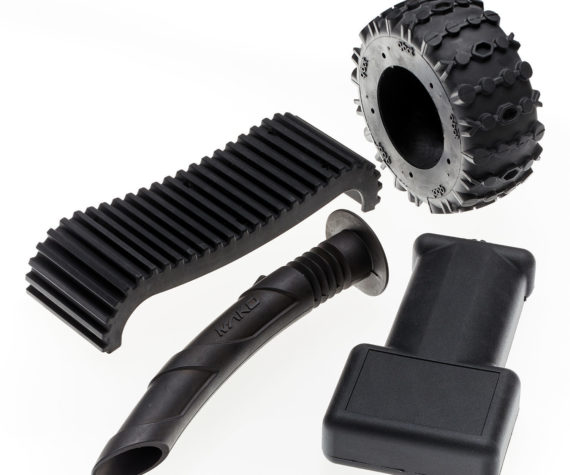Silicone rubber: naturally manmade

Manmade rubbers such as silicone rubber are sometimes described as synthetic, this is because they have been synthesised from other materials.
Manmade rubbers such as silicone rubber, EPDM, Nitrile etc are sometimes described as synthetic, this is because they have been synthesised from other materials.
Silicone rubber is the most commonly used synthetic rubber or polymer and while natural rubber is sourced from the latex of a rubber tree, which originates from South America and many generations ago, silicone rubber is composed of silicone, hydrogen, carbon and oxygen. The characteristics of silicone result in the perfect balance of mechanical and chemical properties. With a temperature range of -100°C to +300°C making it widely used across many industries.
When you have a need, chat with us if we are online, use our contact form, email or call us. We look forward to hearing from you!
Being highly inert, silicone rubber can be used in medical applications or food processing, it is available in shore hardness from 10 to 100, it’s also easily colour matched. Silicone rubber also has excellent UV and Ozone resistance which makes it suitable for outdoor applications. In this, it exceeds the performance of natural rubbers.
It is the use of additives that generates a wide range of different properties of various silicone rubbers.
Wacker (a key European supplier of silicone rubber) for example claims around 1,000 different silicone rubber products. All 1,000 are varied because of the specific additives used. Wacker writes that the most important additives are crosslinkers, fillers and catalysts. Additives can offer extreme high or low temperature, electrical conductivity, flame retardancy, chemical resistance, high tear strength, etc.
Visit our rubber mouldings section
See also our materials page
Most of our silicone rubber mouldings use compression or transfer moulding techniques and we use solid HTV (high-temperature-vulcanizing) silicone rubbers. High-temperature vulcanisation describes how the silicone rubber is permanently vulcanised (cured) when it is in the moulding press having been shaped into the part we are moulding and subjected to high temperature.
It is possible to get RTV (room-temperature-vulcanising) silicone rubber but that could give us less flexibility. For example, with HTV, we can decide at which point we begin moulding, during which permanent vulcanisation will take place. Using HTV means we have maximum flexibility in production.
We welcome customer visits to Rubbertech as it is easy to show examples of mouldings in silicone and other materials. Our silicone mouldings range from keypads with carbon contacts, seals and gaskets to metal bonded over-mouldings. We also manufacture mouldings using other synthetic rubber materials such as FKM, EPDM, Nitrile where certain physical or chemical properties are required, these mouldings are generally all seals, gaskets, bellows and metal bonded over-mouldings.
If you have some designs of your requirement available, please send these to us and we can help advise on material and of course offer a quotation.